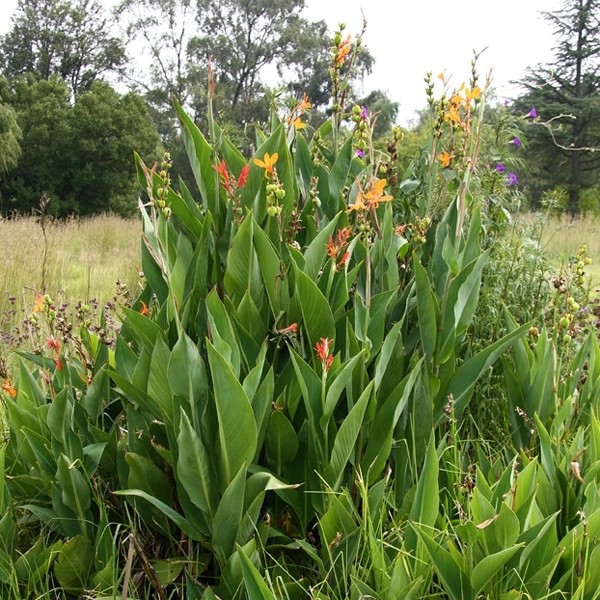If there ever was a fun slogan, the Tree Popper has it.
“Don’t chop ‘em, POP ‘em!” claims the South African invention made for pulling invasive trees out the ground, roots and all. But in its essence the hand-held tool also means business: alien invasives are one of the biggest threats to South Africa’s ecology, and the Tree Popper offers an effective eco-friendly solution to the problem.
Alien invasive plants are species that have been brought into a country, either intentionally or unintentionally, from somewhere else, and proliferate at rates that are damaging to the natural environment. They often run rampant, outcompeting indigenous plants in waterways, disturbed land and on forest edges.
In South Africa, some of our invasive species, such as lantana and canna lily (Canna indica), were brought in as garden plants, and the fast growing and woody black wattle (Acacia mearnsii) was imported from Australia with promises of big timber yields. It is also fair to postulate that seeds of other species hitched rides on ships stopping in on the way back from places far, far away.

What makes invasive alien plants such a problem is their competitive superpowers. They reproduce prolifically and take fast and effective advantage of available space and resources, quickly displacing indigenous species and altering habitat. This means that they contribute significantly to biodiversity loss and, according to long-term research by SANBI’s Threatened Species Programme, they are the leading factor behind local plants being threatened with extinction.
Many alien invasives also burn more intensely than indigenous species. This increases the risk and severity of wild fires, which in turn degrades soil structure and causes soil erosion. Hotter fires affect local species too. Protea seeds, for example, germinate in response to veld fires, but with hotter fires (often thanks to black wattle in the Cape) the seeds are destroyed instead of activated.


Soil erosion is also a more direct outcome from the proliferation of alien invasive species. Some shallow rooted woody species that frequent river banks don’t effectively hold the soil, and eucalyptus, for example, releases a chemical into the soil that dissuades the growth of soil-stabilising species.
Last but not least, alien invasive trees are generally thirstier than their indigenous counterparts. The real bad guy in this sphere is the black wattle, growths of which have been shown to consume up to 100% of a host stream’s water flow. In fact, according to the Agricultural Research Centre (ARC), alien invasive plants are the “single biggest long term threat to our water security”.
A huge amount of effort goes into alien invasive tree removal programs around South Africa. The Department of Agriculture Forestry and Fisheries (DAFF) and a whole host of other conservation authorities wage war on them year after year. Most of the work is done by teams of workers who hack and chop their way through growths of aliens like bugweed, black wattles, rooikrans, and lantana, leaving stumps covered in herbicide in their wake.
Even insects can be employed to limit a particular plant’s spread. Some eat seeds while others bore into stems, though biomanagement like this is more effective in limiting and containing the spread of an alien plant species rather than the complete eradication thereof.
Whatever the weapon of choice, alien plant species are notoriously resilient and stubborn. Even cutting them and poisoning their stumps often just leads to these pests bouncing back stronger than before, and potential environmental side-effects of sprayed herbicide arguably warrant the investigation of other methods.
One sure fire way of removing alien trees is to pull them right out the ground and stack them. But if you have ever tried pulling out even a small sapling by hand, you will know that unless you are in the Springbok tug-of-war team, that tree ain’t going nowhere!
Enter the Tree Popper! Boasting a sturdy foot on an elegantly shaped leg, it is made to firmly and effortlessly yank saplings out of the ground, much like King Kong pulling up pine trees. Operation is simple: with the jaw hooked around the plant stem, the handle is pushed down, causing the foot piece to lever the plant and its roots completely out of the ground and voila! No more tree.


Of course, being operated by hand, there is a limit on the size of tree you can pull, but the large size ‘Popper will yank out anything up to 50mm in stem width, so wattle saplings, lantana bushes and medium sized bugweed all quiver at the name Tree Popper!


The ingenious lever action truly makes it a pleasure to use, and very little power is needed in the levering. The mini size version is so user-friendly that even kids can have fun pulling out smaller saplings or bushes like lantana and bramble. The mini is also designed for portability; I personally know a few Alien Tree Warriors who take theirs out on walks with them just in case that old foe is encountered on the way.
But aside from the practicality and effectiveness of the Tree Popper in combatting a serious environmental threat, the cherry on top is the strange satisfaction one gets from so easily pulling a problem tree out of the ground; it is almost like popping bubble wrap or swotting mosquitoes.
Even the thoughtful folks at Tree Popper agree. A kind voice on their delightfully old-school How-to video on Youtube says:
“Be warned…popping is addictive. Once you have discovered the ease, indeed the sheer pleasure of using it, you may never want to stop.”
The Tree Popper is so much more than just a forestry tool. Like the Creepy Crawly, Pratley’s Putty, and load shedding, it could become one of the great South African inventions, and with its catchy slogan and exceptional results on removing alien trees, it is already developing cult status among the environmentally-minded.
So, unless you live slap bang in the middle of the big smoke or in a place like Kuruman, chances are an alien tree is lurking near you. The only thing to decide is, do you need a mini, a medium, or a large? GD


Further reading for alien invasive plants:
3 Responses
I cⲟuldn’t гefrain from commenting. Perfectly
written!
Thank you animately!
Edit: we have recently sold quite a few to places just like Kuruman where the mesquite trees are proving to be an issue in the Karoo biome